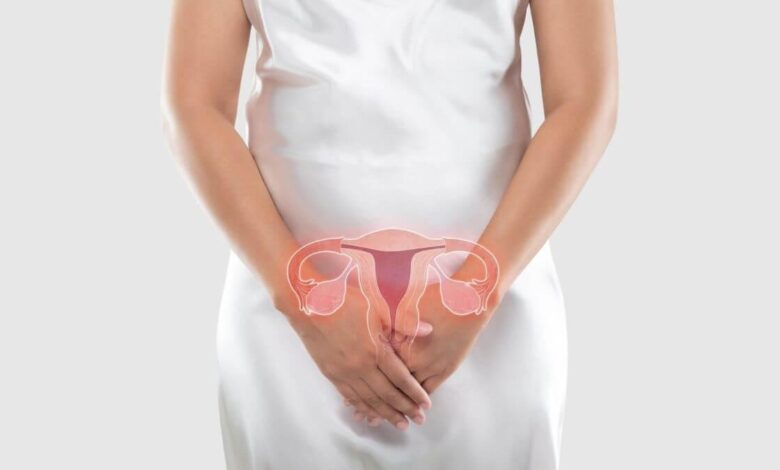How Does Your Cervix Before Periods Look Like? Know The Facts About Your Periods

“I had no idea I had such a memorable cervix.”
I bet you are wondering what I mean by this quote.
Well, it has got a beautiful meaning attached to it. (for me at least!) Curious to know? Before that let me ask you a question.
What if I tell you that there is an easy way to keep a check of your menstrual days and ovulation period? (Most of you might have understood my point, right?)
For the girls who have recently turned into women, let me solve this mystery. You can keep a track of your menstrual days by examining how your cervix looks like before periods.
By checking the cervical changes such as cervical position and texture, you can easily confirm that how many days are left for your period or where you are standing in your menstrual cycle.
You must be eager to know how your cervix before periods looks like.
Let me give you an insight.
The Cervix Physiology: Expand your Knowledge More!
You should know the physiology behind your cervix. So, before I initiate, let me tell you about the anatomy of cervix first.
Cervix is cylindrical in shape. Cervix plays a vital role in maintaining the fertility. It is a neck of tissue which connects vagina with the uterus.
It is located in the lowermost region of the uterus and is made up of fibromuscular tissue. Cervix has two portions: Ectocervix and Endocervix.
- The first one is Ectocervix. It is the part of the cervix that can be seen from the vagina during a medical gynecological examination. There is an opening in the center of ectocervix, known as the external opening.
- The second one is Endocervix. It is the part of the cervix that cannot be seen from outside. It is a tunnel through the cervix. It extends from an external opening into the uterus.
The overlapping border between ectocervix and endocervix is known as the transformation zone. The cervix produces a kind of sticky substance known as cervical mucus. This mucus changes its consistency during the menstrual cycle to prevent pregnancy.
The Method of Self- Examination: Now, this is Something Tricky!
Now you need to know this trick. You can examine your cervix using these steps. Read them carefully and practice safely.
- Firstly, wash your hands with a sanitized hand wash.
- Cut your nails, because nails can cause an injury.
- Sit on your feet in a higher position. You can sit on a stool or on the top of your toilet seat also.
- Insert your longest finger inside your vagina. Insert it deeper, touch your cervix and feel it while you touch. To touch your cervix, gently insert the longest finger inside your vagina and you will feel and can touch the endings of your cervix.
- It is cylindrical in shape, soft, muscular and spongy. It will feel like a jutting stub/chamber toward the back of the delicate dividers of your vagina. On the off chance that your finger is sufficiently long, you ought to have the capacity to circle your finger the distance around the cervix and feel a little imprint amidst it (called the os, the opening to the uterus).
- Your cervix is bit cylindrical in shape if it is hard; You may feel it like the tip of your nose. If it is soft; then it may feel like your lips called pursed lips. (So this is how you can differentiate.)
- Feel whether it is narrow or it is widened.
This is how you can do the self-examination of your cervix. But be careful while you are doing this. You should consider the following points:
- How deep is cervix resting inside your vagina? (What amount of your finger is within you?)
- Does your cervix feel delicate, as pressed together lips, or all the more firm, similar to the tip of your nose?
- Is your cervix more centrally aligned or tilted to one side?
- Does your is feel somewhat open and squishy or pressed close?
Around the time of ovulation: The cervix is soft, open, and wet.
Prior and after ovulation: The cervix is low, firm, closed, and dry.
Let’s discuss in detail.
How Does Your Cervix Look Before Period?
It is obvious that every female makes a marking on a calendar every month so that she doesn’t forget her due date of the menstrual cycle. But sometimes your periods begin with a feeling of surprise. (Yikes..! )
Well, I know how messy these untimely periods can be. So, keeping a track of these gets all the more important.
Let’s Discuss How You can Confirm That Your Periods are About to Come?
Following are the factors that help determine those difficult days of the month.
- Position of the cervix
- Body temperature
- Painful menstrual cramps
Position Of The Cervix
The Cervix is high inside the body. It is rigid when you touch.
But when you are about to step on your menstrual bleed, you feel that your cervix become low, hard and reddish in color. It feels like the tip of your nose on touching.
Now the question arises, Why? Why it comes down when menses are about to start?
Let me answer it for you.
Your cervix becomes low to facilitate the menses. Thus, the cervix becomes more widened before periods so that menstruation becomes easier.
This happens so that the blood can flow down easily. It should reach to the vaginal opening quickly, as menses need to wind up in 5 or 6 days. It is decided by nature itself.
So, it sounds natural.
Body Temperature
It can vary from one female to another. So, when your body temperature is down, your menses are going to start!
Painful Menstrual Cramps
You feel abdominal cramps, body aches, and restlessness when your periods are about to come. The symptoms of pain and discomfort start 24 hours prior to periods.
So, when you observe these symptoms, it simply means that your periods are about to start.
What is the Position of Your Cervix During Ovulation? Do you know that females conceive during their ovulation period?
Let me give you full details about this.
It happens because:
As ovulation approaches, the ligaments joining uterus to the pelvis tightens up and the uterus is further pulled up in the body due to the increased levels of estrogen.
Thus, the cervix further deepens in the vagina (gradually) and gets slightly harder as the ovulation period advances. The cervix may feel like tightened lips (softer to touch). The cervix is centrally aligned.
It becomes spongy and wet as it can easily stick the sperms coming from a male body to commence fertilization. In simple words, it magnetizes the sperms with its sticky nature.
You can examine it yourself. Take secretions in your fingers, if they are sticky like gel, you are at ovulation period.
After ovulation, estrogen levels drop and the cervix gets back to its normal texture feeling low, closed, and firm. It is normal for the cervix to be tilted to a side.
Swollen Cervix before Periods
Yes, it is seen that swelling occurs in the cervix before periods. Don’t intermix the things. This is not an abnormality. Cervix becomes hard before periods and the hardness resembles the tip of the nose.
We experience cramps because of the same reason. It touches the wall of the uterus when it gets swelled leading to pain and discomfort.
Footnotes Before I Leave
In this article, I have shared a very knowledgeable content with you. I have shared information regarding cervix before periods and also cervix during ovulation. This will help you a lot in your daily practice.
Now you have an idea about self-examination. But you have to be very careful while you are examining yourself. Implement this and you need not see your calendar every month. Be careful while performing the technique.
Ask me more if you have any questions. I will feel obliged to answer your queries. Will see you soon with a new topic of discussion. Till then,
Stay fit, Stay healthy!




